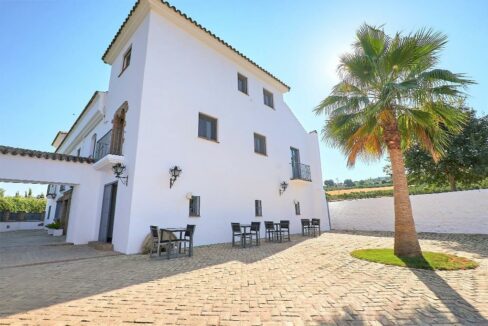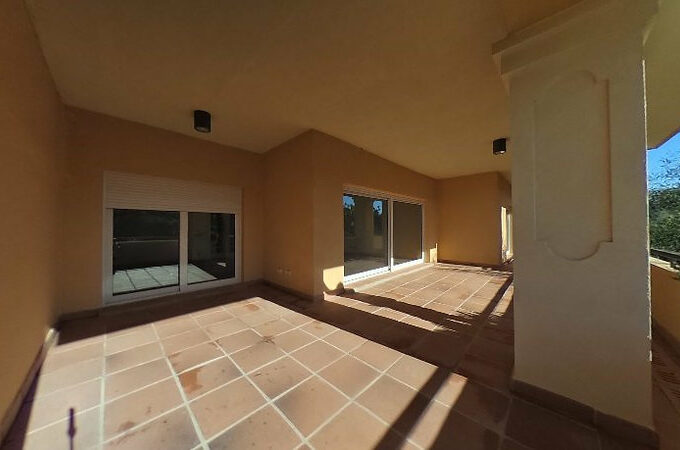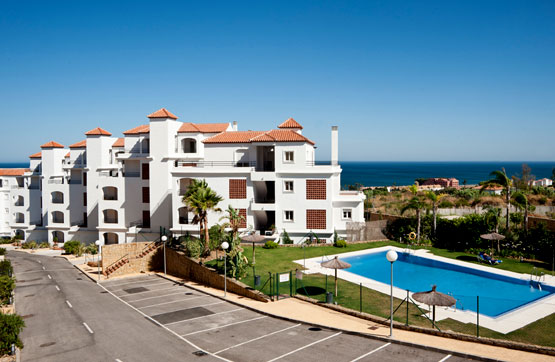PROPERTIES FOR SALE IN RONDA & SERRANÍA DE RONDA
Property for sale in Ronda – The Serranía de Ronda is the home of some of the pretties whitewashed pueblos in Malaga. – If you’re looking for a property in Malaga or in the surrounding areas, we can help. Visit our property portfolio a check out any of the hundreds of properties we have available for sale or rent.
Villa in Ronda (PIM10009)
€1,800,000
Added to favorites
Added To Favourite

Perfect Weather
With an average of 320 days of sunshine a year, it's really a sun worshipers dream.

Socialising
The expat, community feel that makes socialising easy and making new friends, even easier.

Amazing Food
Try one of the fantastic traditional and modern eateries or Michelin Starred restaurants.

Golf Courses
The Costa del Golf has over 70 courses and is the #1 European destination for golf lovers.
PROPERTY FOR SALE IN RONDA
Popular locations to buy: Marbella | Benalmadena | Duquesa | Estepona | Fuengirola | Mijas | Sotogrande
The Serranía de Ronda is the home of some of the pretties whitewashed pueblos in Malaga.
The beautifully positioned town of Ronda, on the Tajo gorge, has become one of the most popular destinations in Andalucia. It enjoys magnificent panoramic views over the untamed mountains of the Ronda Mountain Range and now Mountain Range.
Moving away from Ronda there are more villages worth visiting around the Sierranía de Ronda. On the east and south fringes of the mountain, you’ll find picturesque destinations such as Tolox, Guaro and Istán.
Serranía de Ronda wine region is a perfect destination for those who want to explore high-quality wines. The small family-owned bodegas produce unique wines that are celebrated across the globe. Over the last decade, there has been a huge growth in the number of wines produced in the Serranía de Ronda wine region.
Cork has contributed greatly to the local economy since the late 17th century. Cortes used to be one of the richest pueblos blanco’s, due to its cork production and evidence of this wealth can still be seen today in the grand 18th-century mansions lining the main street. Covering over 170km², Cortes is one of the largest municipalities in Malaga province. The town has a population of around 4,500 and is located at 623m.
Areas in Serranía de Ronda
Algatocín, Alpandeire , Arriate , Atajate , Benadalid, Benalauría, Benaoján, Benarrabá, Cartajima, Cortes de la Frontera, Faraján, Gaucín, Genalguacil, Igualeja, Jimera de Líbar, Jubrique, Júzcar, Montejaque, Parauta, Pujerra, Ronda
Algatocín
This small village is made up of typically Andalusian white houses and is situated in the mountains between the Rivers Genal and Guadiaro in the centre of Serranía de Ronda. The odd layout of Algatocín, of Moorish origin, is staggered and it has adapted to the slopes with steep, narrow and winding streets. Amongst the white of its houses, various 18th-century buildings with elegant coats of arms stand out.
This tiny village of fewer than 1.000 inhabitants, has a narrow, 20 square kilometre area that runs from east to west and strides the Guadiaro and Genal valleys.
The actual village situated at 724 metres, is on the A-369 Ronda – Gaucin road and is on the MA-8305 road Estepona junction. Just south of the village, the A-373 road leads off down to the station at Cortes de la Frontera and onto Ubrique.
Alpandeire
Alpandeire is a small town within the administrative district of Ronda, is an enclave of great natural beauty, with a very interesting history behind it. Its population of just over three hundred inhabitants are known by the popular nickname of “panditos”.
The present-day village dates back to the 8th century, Alpandeire being one of the first towns fortified by the Moslems in the Serrania de Ronda region. The layout of its streets still reflects the influence of Andalusi-Arabic culture, and particularly impressive for the visitor is the large nave of Saint Anthony of Padua Church, which dates back to the 18th century. The echoes of stories of bandits still resound throughout these lands and lie halfway between truth and legend.
Arriate
The name Arriate has Arabic origins, as well as the urban core of this village is situated in the Ronda mountain range, 105 kilometres away from Malaga and only 8 kilometres away from Ronda.
Arriate is a beautiful maze of tightly packed architecture and culture, with windy streets. Turn a corner and suddenly you’re thrown into the sophisticated high street in a chic and bustling small town. There are amazing restaurants, cafés and bars and an abundance of high-class stores selling quality goods.
With an area of only 9 square kilometres, Arriate is the smallest municipal district in the province of Málaga, surrounded by land belonging to one of the largest, Ronda.
Atajate
Atajate is both a municipality and a tiny village in Málaga’s Ronda mountains. The village itself is part of the White Pueblo Route and is home to under 200 people, known as Atajateños. It’s known for both its beauty and natural surroundings as it is located between the Genal River Valley, the Guadiaro River, the Peñasblancas Peak and the Cerro del Cuervo and includes a gorgeous nature area called the “Torcal of Atajate” which is a labyrinth of rock formations covered with Mediterranean flora.
Benadalid
Benadalid is part of the trail of white villages of Andalusi Arabic origin which follows the road linking Gaucin with Ronda.
The traveller will be surprised to find the perfectly-conserved remains of the former Arabic castle, the interior of which has been turned into a secluded cemetery, standing adjacent to the village.
The village is becoming ever more important in the world of tourism, thanks both to its natural setting and the plastic beauty of its urban landscape. Benadalid also offers the tourist the opportunity to get to know the cultural characteristics of the area’s villages. El Alambique Restaurant-Museum offers samples of all aspects of the region’s culinary customs.
Benalauría
The road which links Gaucin with Ronda affords the traveller an impressive view of the mountains covered in the green of cork oaks, gall oaks and chestnut trees, into which the white villages of the Genal Valley are set like jewels, with streets which still conjure up the magic of their Andalusi-Arabic past.
However, the aforementioned busy thoroughfare does not offer a panorama of Benalauria, which is two kilometres from the crossroads with the A-369 highway, but the traveller will find a detour to visit this most special enclave well worthwhile.
As is the case with most of the villages in the Genal Valley, its steep streets serve to provide views of both the unusual urban structure of the village and a wide panoramic view of the surrounding mountains.
Walking through the streets of Benalauria, we soon come to the square which is home to the 18th-century Town Hall, opposite which stands a collection of slender palm trees which are an unequivocal reminder of the village’s Moorish past, and, moving a little further on, we find St. Domingo”s Parish Church, built in the 15th and 16th centuries.
Benaoján
As the name suggests (the prefix Ben- found across the region derives from the Arabic ‘ibn’, ‘son of’), this is another village of Moorish origins. Located very near Montejaque, the settlement can be found in two halves.
The original village was built on a mountainside with the lower community in the Guadiaro river valley that grew up around the railway station.
The area is popular for rural tourism and offers excellent walks, mountain views and potholing. Indeed, the lower part of the municipality runs into Grazalema Natural Park, with the valley dominated by the striking limestone peaks of Ventana at 1298 metres and Palo at 1400 metres above sea level.
Benarrabá
This hidden village can only be approached by car, along its own short but mountainous 3-kilometre road. To find the turn-off, look for Gaucín on the map and the junction to the right is 5 kilometres to the north. The municipal district was probably much larger as the pueblo was once the site of an important village. As neighbouring villages such as Algatocín have developed and gained independence, they have demanded a hinterland.
The population was 627 in 2008 and 455 in 2019 and remains about the same today. Although off the beaten track, Benarraba is an interesting village to visit and has several bars and small restaurants. The people born in the village are known as Benarrabiches.
Cartajima
Located halfway between the Ronda-San Pedro road and the village of Juzcar, Cartajima is a small, quiet hamlet. It is one of the highest communities in the province of Malaga, at 846m above sea level. Like other villages in the Alto Genal of the Serrania de Ronda, Cartajima is famous for its chestnut trees, which are harvested in October and November. In the 19th-century cannon factories brought wealth, and the town was known as “Little Cadiz”. Cartajima has a spectacular setting: a backdrop of mountainous limestone dominates the village from behind. The contrast between the white limestone massif (the Sierra de Oreganal) above the village, and the low-lying chestnut, oak and cork-oak woods below, is sharp and dramatic.
Cortes de la Frontera
Sandwiched between the Alcornocales natural park and Sierra de Grazalema natural park in the far western reaches of Malaga province is the pueblo blanco of Cortes de la Frontera. It is in a superb vantage point overlooking the sweeping Guadiaro valley below, with a spectacular backdrop of the Serranía de Ronda mountains.
Dominating the landscape around the town are extensive woods of cork trees that stretch from the Guadiaro river westwards, to where the municipal boundary meets Cadiz province, and beyond. Cork has contributed greatly to the local economy since the late 17th century. Cortes used to be one of the richest pueblos blancos because of cork production and evidence of this wealth can still be seen today in the grand 18th-century mansions lining the main street.
Covering over 170km², Cortes is one of the largest municipalities in Malaga province. The town of Cortes has a population of around 4,500 and is located at 623m.
Faraján
Like the other pueblos of the Alto Genal (the ‘high’ reaches of the Genal river valley), Farajan is another Moorish town, built 641 metres above sea level. The origin of the place name is said to be a corruption of Lugar Ameno/Alegre, a loose translation of the Arabic for “pleasant place”. A more plausible interpretation is based on the name Faraxan or Haraga, meaning the “Place of Havaral”.
With a population today of less than 300, this pueblo once stood at the heart of three other Moorish communities. Only names on maps now indicate the sites of lost communities such as Balastar (Albalaxtear), Chucar and Castillejo. Modern-day Farajan, although depleted over the centuries, still thrives with a mixture of wheat and other cereal crops, vineyards and livestock farming. A quiet place.
Famed for more than 2,000 years as a refuge for ‘peace and rest’ it is beginning to make a mark on the rural tourism business and should be visited before things change. Its annual feria, in honour of Patron Saint San Sebastian, runs 6-7 August every year.
Gaucín
Gaucin is a spectacularly beautiful mountain village commanding sweeping views of Gibraltar and North Africa. The village is a gateway to the Serranía de Ronda where, depending on the time of year, you can enjoy an impressionist palette of colour: brilliant brush strokes of red poppies, yellow mimosa, purple wild orchids, tempered by the cool green of olive groves and an occasional splash of pale pink almond blossom. Indeed, Gaucin is famous for its international artists’ community.
The town has a population of less than 2,000, and its narrow medieval streets and tall, narrow houses are sprawled picturesquely over two hills and the adjoining land between them. Perched high above the deep River Genal valley, Gaucin is overlooked by the imposing Sierra del Hacho mountain. The village is 626m above sea level.
As you would expect from the name, it is not unusual to see eagles circling the towers here, and kestrels nest in the walls of the convent. Gaucin, like many other birding sites in this part of Andalucia, has plaques around the town showing both native and migrating birds which can be seen in the vicinity.
Genalguacil
Genalguacil is one white Andalucian mountain village that art lovers will not want to miss. Prize-winning contemporary works of art are on permanent public display throughout the village as a result of the bi-annual art festival called “Los Encuentros de Arte del Valle del Genal” (1st to 15th August 2018) and in the aftermath of the festivals. This is probably the most outstanding feature of this typical small white village. Visitors come from all over to wander the narrow streets and charming plazas in search of artistic treasures.
Igualeja
Approaching Igualeja along the road which leads off the San Pedro de Alcántara to Ronda highway near the Sierra de las Nieves, the traveller is met with a superlative view of the Genal Valley, as it is here, at the entrance to the village, that the river which flows through one of Andalusia”s most spectacular valleys has its source.
Another interesting feature of Igualeja is that legend and tradition combine here to produce the figure of the generous highwayman. Zamarrita, Juan el Nene, Flores Arrocha and Pedro Flores, all born in Igualeja, all bandits or outlaws who committed violent crimes, are seen from the point of view of legend as mythical characters who protected the weak from the oppression of those in power.
Jimera de Líbar
Jimera de Líbar is an excellent destination for anyone wishing to enjoy the wonders of rural tourism in Andalucia. This town is one of the white villages in the Ronda mountains (Serranía de Ronda). It is nestled in the Guadiaro Valley right across from the Líbar mountain range and – best of all – it is inside the Sierra de Grazalema Natural Park.
Jubrique
As is the case with the rest of the villages in the Genal Valley, Jubrique stands on mountainous terrain, its streets and houses adapted to the uneven land on which they were built, thus creating the architectural layout so typical of the Serrania de Ronda region.
The village is easily approached by road, which skirts the lower part of the village. When approaching Estepona park up by the Morisco-looking monument of the Hermitage of the Castanuelo, just above the town. Looking down the immediate valley, the old Lavardero can be seen, which until the coming of electricity, was the main washing area. A pleasant short track leads down to this.
Júzcar
Júzcar is a small Andalusian town located in the province of Malaga, just 20 minutes by car from the wonderful and ancient town of Ronda. It is a village of about 300 inhabitants, completely painted in blue and known in Spain as “The city of the Smurfs”.
This once anonymous village with typical white houses became famous in 2011 when it was coloured in blue due to Sony Pictures’ Spanish launch of the film dedicated to the Smurfs. Once filming was over, the film distribution house offered to restore Júzcar to his usual colour, but the locals refused the offer. They had just discovered the great benefits they could get from tourism by keeping their city blue.
Juzcar, one of the small villages located in the beautiful, scenic Valle del Genal in the Serrania de Ronda, is the first ever ´smurf town´ in the world, since June 2011.
Until this date, Júzcar was a weekend destination for lovers of rural tourism, hiking and other activities such as climbing and ravening. People came from all over to explore the area that surrounds it. Now, the town receives a large number of tourists, an average of 250 per day, coming from all around the world.
Montejaque
A white village in the Serrania de Ronda mountains whose urban design bears witness to its Andalusi past, with steep, narrow streets and whitewashed houses with Arabic roof tiling; a past that is especially evident in the upper district of the village.
The lower district, with its modern streets, is home to St. James” Parish Church.
As in all the pueblos blancos, Montejaque dates from the time of the Berber settlers, after the Muslim conquest. Located in a semi-hidden bowl hidden by circular rocky outcrops, it overlooks a small fertile valley of olive groves.
Parauta
Parauta is a municipality with Moorish origins located in the western part of the province of Malaga, in the Valle del Genal. With its white-washed streets, richly fertile valley and privileged location within the Parque Natural de la Sierra de las Nieves, Parauta is a unique destination to relax and tune in to nature. In this area, you’ll discover the millenary holm oak tree, considered one of the oldest in the world.
A white village in the Serranía de Ronda mountains whose Andalusi past is visible in its urban design, consisting of steep, narrow streets of whitewashed houses topped with Arabic roof tiling. Outside the village, the centre is the famous Valdecilla holm oak, one hundred years old and an impressive sight with its 3-metre diameter.
Pujerra
The whitewashed village Pujerra is located at the top of the Valle del Genal, 770 meters above sea level. This municipality encapsulates all the charm of Andalusia together with the ecological riches of the Serranía de Ronda.
Walking along its streets, you can feel centuries of history: old architecture, with steep vertical streets, and newer forms combine, taking you on a journey through the history of the province. According to several experts, Pujerra dates back to the 2nd century.
This mountain village is one of the most isolated in the region. It lies a long and windy 11km from the A376 San Pedro-Ronda road, beyond the pueblo of Igualeja.
With a 4×4 or taking it slowly, a basic ‘Jubrique track’ leads over the mountains from the Estepona – Jubrique road. It can also be reached via another track from Juzcar and across the Rio Genal. Trout fishing is popular here but by permit only. This is also the site of the deserted medieval village of Cenay, which was large enough to have its church and was the seat of a very large rural parish.
Ronda
Ancient Ronda is a colourful tapestry woven from a skein of tangled threads which makes it one of the most interesting cities in all of Andalusia. The landscape, the layout of the town, its history, the romantic legend of its bandits with their evocative names, the cradle of bullfighters and artists whose names have gone down in history: all this makes Ronda a unique city.
The list of outstanding men of letters who have fallen captive to the charms of this city can be traced from the earliest texts down to the present day. Pliny, al-Motámid the poet-king of Seville, al-Idrisi, Ibn al-Jatib, Vicente Espinel, Rilke, Juan Ramón Jiménez and Juan Goytisolo are just a few of the long line of authors who have written eloquent pages about Ronda; a place where –if the locals are to believe– it rains upwards, and where birds fly beneath your feet as you lean out over the Tajo gorge.
Despite being a growing town, Ronda retains much of its historic charm, particularly its old town. It is famous worldwide for its dramatic escarpments and views, and for the deep El Tajo gorge that carries the rio Guadalevín through its centre. Visitors make a beeline for the 18th century Puente Nuevo ‘new’ bridge, which straddles the 100m chasm below, before taking in the views from the Alameda out over the Serranía de Ronda mountains.
Featured Properties
***Bank Repossession*** – 3 Bed, 4 Bath Sotogrande
***Bank Repossessed Property in Sotogrande*** Exquisite 3 Bed, 4 Bath…
€478,000
***Bank Repossession*** – 2 Bed, 2 Bath Apartment in Manilva
***Bank Repossessed Property in Manilva*** Charming 2 Bed, 2 Bath…
€165,600
Popular Areas
Useful Articles
Other Services
- We'll help you to find property for sale in Fuengirola
- Search for your dream property today in Fuengirola | Apartments for sale in Fuengirola | Villas for sale in Fuengirola | Properties to sale in Fuengirola
- Search for your dream property today in Malaga, Spain | Golf property for sale in Malaga | Properties for sale in Malaga | Property for sale Costa del Sol | Property for sale in spain for under 50k | Villas for sale in Malaga, Spain | Apartments for sale in Malaga Spain | Properties to sale in Spain
- Statistics and prices of property for sale in Fuengirola
- Cheapest areas: El Higuerón, Carvajal - Las Gaviotas, Zona Sohail
- Most expensive areas: Benamara-Atalaya, Selwo, Punta Plata
- Prices are going down in: Zona Puerto Deportivo, Torreblanca del Sol, Los Boliches
- Average property price in this area: 3,520 €/m2



